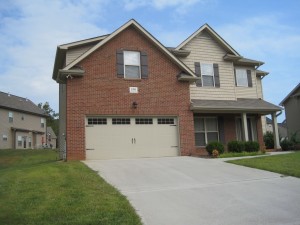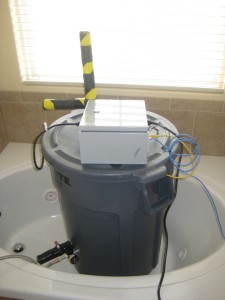Machines Replace People to Provide Unprecedented Precision in Energy Efficiency Assessments

A six-year, first-of-its-kind study comparing the energy efficiency of three experimental houses has yielded valuable insights for utilities regarding the relative effectiveness of various technologies. EPRI, Tennessee Valley Authority (TVA), and Oak Ridge National Laboratory collaborated on the project in a suburb of Knoxville, Tennessee.
Houses That Simulate Human Behavior… and Heat
In 2009, TVA built three houses, outfitting each to provide a different level of energy efficiency. The Builder house, the project’s control, was constructed to standard local building codes and looked much like other Tennessee Valley houses. The Retrofit house was equipped with currently available energy-efficient technologies, such as programmable thermostats and Energy Star appliances. The High-Performance house incorporated the latest construction technologies, with elements such as rooftop solar, six-inch-thick walls, and triple-pane windows.
To ensure accurate comparison of the houses’ energy efficiency, EPRI and Oak Ridge National Laboratory equipped them with automated systems to replicate human domestic behavior. Lights and TVs in the three houses were programmed to simultaneously switch on and off by themselves. Robotic arms opened and closed refrigerator doors at the same time in each house. An identical load of towels spun in each dryer. EPRI created a system to simulate the breathing, sweating, and heat output of three humans, replicating significant factors affecting energy consumption (see sidebar).
In contrast with previous residential energy efficiency demonstration projects in occupied residences with variable human behavior, the EPRI study created identical behaviors in each structure, enabling efficiency and cost comparisons with unprecedented accuracy.
Lessons for Utilities and Consumers
After three years of operation, the Retrofit house used 40% less energy per year than the Builder house, and the High-Performance house used 66% less than the Builder house. The Builder house’s annual energy cost was $1,868, compared to just $320 a year for the High-Performance house.
Utilities can use performance results of various devices to determine if they are ready for deployment. Among the most effective energy savers was a variable-speed heat pump water heater, which proved more efficient and consistent than the solar thermal system for water heating. The use of ducts in unconditioned attics proved to be large energy drains.
A key lesson for builders: The biggest energy savings were provided by thicker walls and additional insulation. For residents, the biggest cost savings were provided by weather stripping and replacing incandescent bulbs with fluorescent bulbs.
The occupancy simulation protocol designed for the experiment will likely serve as a model for future energy efficiency research. By eliminating the variable of human behavior, researchers gained a much clearer picture of how various factors can impact efficiency of residential energy use. “You really couldn’t do this in a lab, because we’re testing the building materials, too,” said EPRI Engineer Chuck Thomas. “This research gives us a better picture not only of the efficiency of the equipment, but also the efficiency of the entire home.”
Simulating Body Heat and Human Sweat with Something He Built in His Garage

EPRI Engineer Chuck Thomas may have been inspired by the 1980s television series MacGyver as he considered how to ensure a precise comparison of the experimental houses’ energy efficiency. He recognized that even the relatively small amount of heat and humidity generated by humans impacts a structure’s interior and the energy required to heat and cool it. The solution: Build a device to simulate heat and sweat output for a family of three, and deploy it in the three houses.
After first considering a device constructed by a University of Central Florida laboratory built with a cast iron skillet and an electric hot plate, Thomas decided to build his own with elements purchased from a local Home Depot. Working in his garage, he equipped a two-and-a-half-gallon water heater with water level and flow rate sensors, wrapped it in insulation, and placed it inside a 50-gallon waste container. “It kind of looks like a garbage can, but there was a lot of work that went into it,” Thomas said.
By cycling the heating element at carefully controlled rates, the device can release through a pipe precise ratios of moisture and heat. In this way, it can simulate varying numbers of occupants over 24 hours. “Have you ever wondered what the sweat and breath of three average human beings would feel like if you pumped it through a 1.5-inch-diameter pipe?” said Thomas. “If you put your hand over the pipe, it would burn you.”
EPRI Technical Expert:
Chuck Thomas
Further Resources
- Advanced Heat Pump Water Heating Technology: Testing Commercial and Residential Systems in the Laboratory and Field
- Variable-Speed Heat Pumps for Energy Efficiency and Demand Response: Field Testing High-Efficiency Systems in a Simulated-Occupancy Home in Knoxville, Tennessee
- The Path to Low Energy Residential Design


